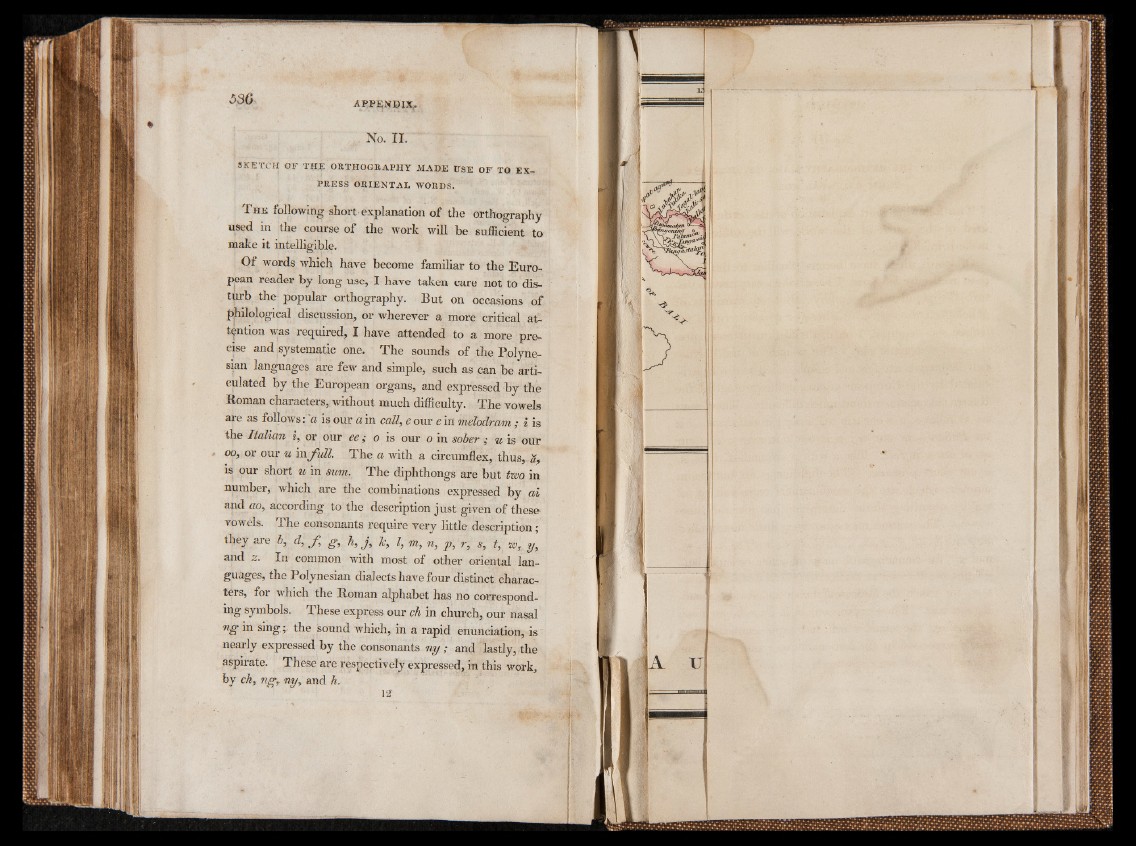
536 APPENDIX;.
No. II.
SKETCH OF THE ORTHOGRAPHY MADE USE OF TO EXPRESS
ORIENTAL WORDS.
T he following short explanation of the orthography
used in the course of the work will be sufficient to
make it intelligible. o . Of words which have become familiar to the European
reader by long use, I have taken care not to disturb
the popular orthography. But on occasions of
philological discussion, or wherever a more critical attention
was required, I have attended to a more precise
and .systematic one. The sounds of the Polynesian
languages are few and simple, such as can be articulated
by the European organs, and expressed by the
Homan characters, without much difficulty. The vowels
are as follows: a is our a in call, e our e in melodram; i is
the Italian i, or our ee; o is our o in sober; u is our
oo, or our u voj'ull. The a with a circumflex, thus, a,
is our short u in sum. The diphthongs are but two in
number, which are the combinations expressed by ai
and ao, according to the description just given of these-
vowels. The consonants require very little description ;
they are b, d, f , g , h, j , Ic, I, m, n, p , r, s, ¡f, w, y,
and aw In common with most of other oriental languages,
the Polynesian dialects have four distinct characters,
for which the Roman alphabet has no corresponding
symbols. These express our ch in church, our nasal
ng in sing.;, the sound which, in a rapid enunciation, is
nearly expressed by the consonants ny ; and lastly, the
aspirate. These are respectively expressed, in this work,
by ch, ng, ny, and h.